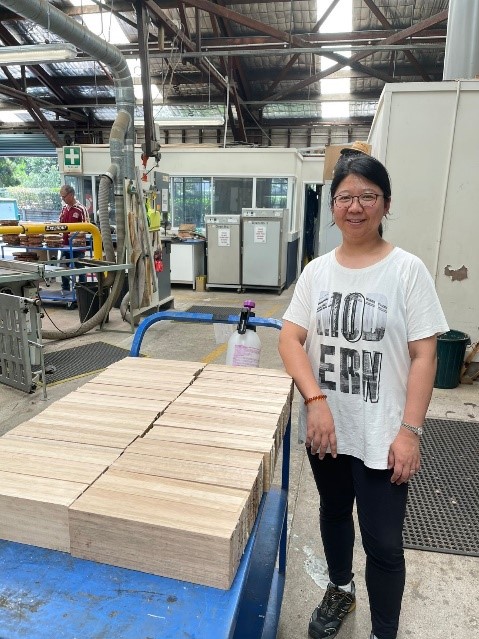Timber-rich buildings and structures can provide robust and long-lasting solutions that satisfy the regulatory or other requirements that govern their structural performance and reliability.
Our team provides research and development services covering:
- Solutions for the design, development, experimental investigation, and analytical and numerical verification of structural engineering.
- Testing of timber, wood and composite structures.
- On-site assessment and evaluation of existing timber and composite structures.
Projects

Supervisors: Dr Assaad, Dr Nathan, Professor Gregory Nolan
In Tasmania, there are a substantial amount of plantation fibre-managed E.nitens being grown and harvested. The local timber industry is seeking to use this species as other than a pulp resource, like raw material for glulam. To introduce E.nitens as a new species in glulam, we need a better understanding of the key performance of the final products to streamline it. My research question is “What is the optimal reliable structural performance of glulam from fibre-managed plantation E.nitens”. To answer this question, three secondary questions based on the manufacturing process, including grading the material, finger joint performance, and whole assembly performance, will be answered.

Supervisors: Dr Assaad, Professor Gregory Nolan
With increasing availability of growing plantation hardwood in Australia, the timber manufacturing sector has become interested in discovering the opportunities and investigating the possible application of the plantation eucalypt species to produce engineered timber products from this resource. Manufacturing structural products from fibre-managed plantation eucalypt can lead to the replacement of imported wood products with Australian grown and processed plantation hardwood timber and create a new marketplace for this resource in the Australian and international building market. Cross-laminated timber (CLT) could be a potential sustainable product recovered from this resource and supply material for commercial buildings. The use of CLT panels brought various benefits for timber industries to make a practical product from low-value products of eucalypt plantation. This research provides an important insight into developing the high-value Australian-made CLT panel from plantation E. nitens timber resource and supporting the potential engineering applications of these CLT panel products.
This FWPA project investigated and categorised key performance characteristics for timber structural systems in the Australian market and produced a guide assisting building design professionals to confidently select appropriate systems. A final draft was submitted to FWPA in June 2017.
This study investigated the structural performance of nail laminated (NLT) and glue laminated (GLT) commodity-based high mass timber floor products assembled from pulp managed plantation Eucalyptus nitens and E. globulus. This would help diversify the product range available for timber recovered from this resource. The key industry collaborators are Britton Timbers and Forico.
The hardwood resources used in this project were 15 years old E. nitens and 26 years old E. globulus. Industrial standardised hardwood seasoning procedures were applied for the conversion of logs into boards. The logs were milled into 38mm thick hardwood boards at 70 mm, 90 mm, 120 mm, and 140 mm widths. A back sawing strategy was used for volume recovery. Based on the small end diameters of the logs, the cutting pattern was confined to a limited number of sizes to create an adequate volume of timber in sizes for laminating end sections. The sapwood and log heart were retained. An overall volume of 16.75 m3 of board was recovered and assessed for a broad range of different visual characteristics and strength reducing characteristics.
The seasoned timber boards were nail or glue laminated to form floor panels. Bending tests were conducted to determine the modulus of elasticity (MOE) and modulus of rupture (MOR) of the single boards and the laminated panels. All panels were formed with randomly selected boards with scattered MOE and MOR values. Test results revealed that although the wood has a F7 performance if used in a scantling product limited by MOR, the overall structural performance of the species was improved when the wood was used as laminated panels through nail or glue lamination method. The E. nitens and E. globulus panels could be classified as F8 and F11 respectively.
The structural performance of the wood was further enhanced by forming timber-concrete composite panels. The composite panels showed structural properties equivalent to timber boards with a F14 performance. The results proved that the current eucalypt plantations targeted at pulpwood production can be used as laminated floor panels to provide additional options in the building sector.